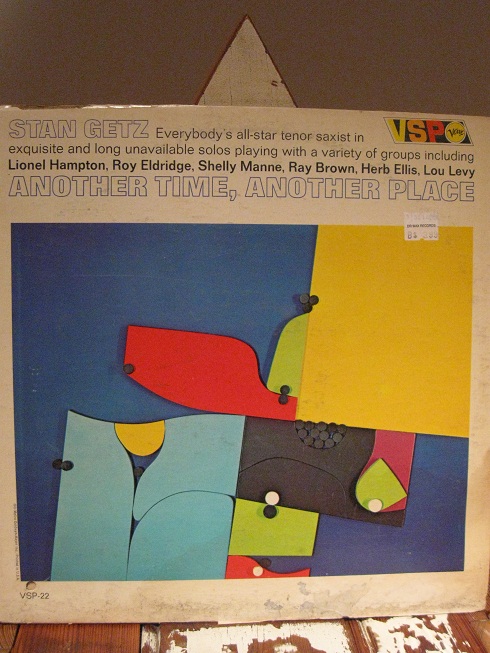Designing Memories

We’ve all been swept away by the ability of an album to evoke memories, ideas, or particular moods. How does the design of an album cover relate to the music and how do music and cover together evoke these memories, ideas, and moods? In the Theaster Gates: the Listening Room exhibition the wall of records is an aesthetic display of the importance of visual imagery to the music we listen to. I can pick up any of these records and attempt to date the year it was released and the type of music that will be heard on the album. Just from looking at the album cover I have an idea formed for what I’m about to experience and something visual to stimulate more thoughts as I listen to the music.
Stan Gets’ “Another Time, Another Place” and Teena Marie’s “Robbery” and are examples of records that tie my ideas of trends popular in an era to the music and design that characterize this era.
What associations do we have of visual designs, colors, and images to musical rhythms? There’s a whole set of abstract visual artists (past and contemporary) who base their design on connecting to some sort of musical rhythm, or spiritual rhythm of which they believe music and visual art are the expressions. Examples of this connection between music and visual art are Wassily Kandinsky’s “Composition” paintings or the intimate relationship between jazz music and visual artists. I would say a musical rhythm relates to emotions, but we all feel emotional sways a little differently and we have different dreams and myths that we associate with certain emotions, music and imagery. Where do we find the overlap between each of our personal dreams and associations to a type of music and imagery?
Critical discussions around trends in artistic and cultural media play a game of informing and being informed by music of an era. These criticisms impact our own experience of music as well. I don’t think the whole arena of critical review and genre categorization hold only arbitrary value, but I wonder what key effects in a song or an album do we agree make it interesting to discuss? How does the social climate affect our experience with music? How does an album or song become iconic or timeless? What does this record collection tell us about certain times in our communal history and our personal relationship to this history?
These are the sorts of questions that Theaster Gates: The Listening Room brings up for us to think about and discuss together. Think about what ideas, fantastical or historical, are evoked in you the next time you listen to something that someone recommends to you, or that you find in a store. Why is this record valuable to remember? What about its album design tells us about when the album was released and the cultural history it represents?